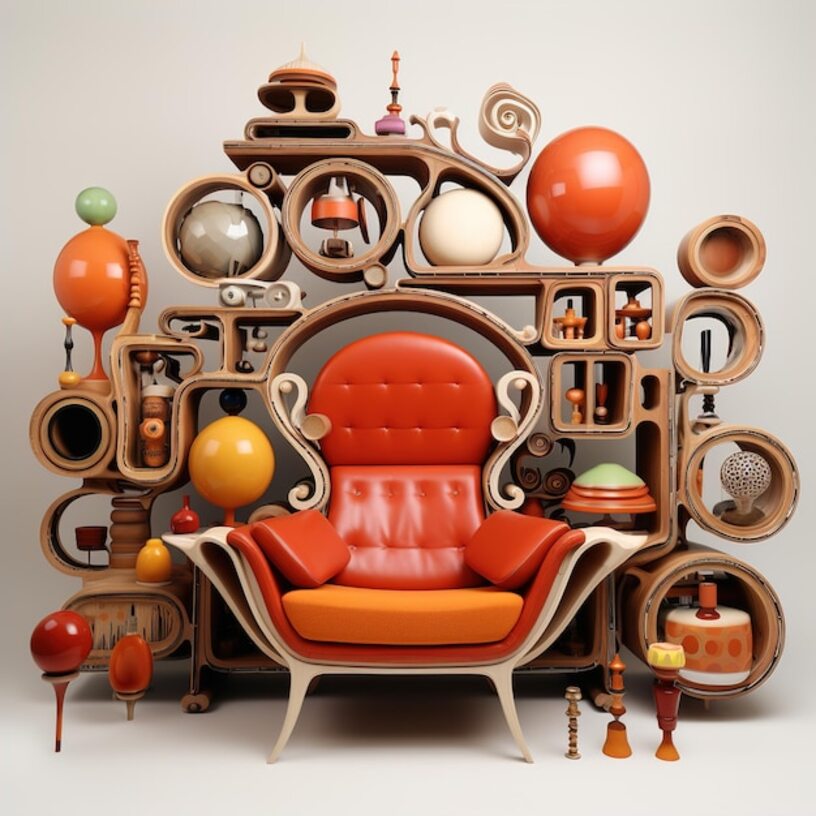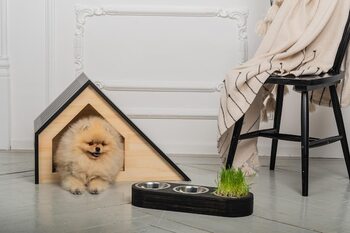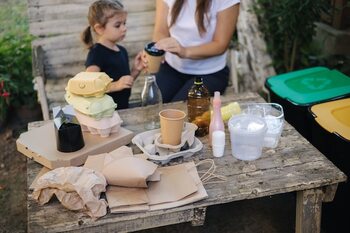Urban spaces: creating a home that fosters creativity

Creating a home in urban spaces that inspires creativity is more than a trend; it is a necessity in a world where innovation and originality are key to well-being. In this article, we will explore how urban environments can be transformed into havens of imagination, from color choices to furniture arrangement. You will learn how to integrate elements that not only beautify your space but also stimulate your mind and promote a fulfilling life. Discover how to make your home a place where ideas flow and inspiration is always present.
The importance of design in creative spaces
The design of a space has a profound impact on our way of interacting with the environment and, therefore, on our creative capacity. In urban spaces, where the pace of life can be fast and often chaotic, the importance of design becomes even more evident. A thoughtfully designed environment not only reflects the personality of its inhabitants but can also foster a sense of calm and concentration. Elements such as natural lighting, stimulating colors, and a functional arrangement of furniture can transform any room into a place where ideas flow freely. By creating specific areas for reflection or creative work, a balance is established that invites exploration and experimentation.
Additionally, design goes beyond the aesthetic; it is about generating meaningful experiences that resonate with our passions and interests. Including local art, plants, or natural elements in the decor not only beautifies the space but also provides visual and emotional stimuli that can inspire new ideas. The personalization of the urban environment allows each individual to express their essence and establish deep connections with their home. Thus, by integrating these aspects into the design of our urban refuge, we not only create a space that is pleasant to the eye but one that nurtures our creativity and emotional well-being.
2. Colors that Inspire: Color Psychology in the Home
The psychology of color is a powerful tool that can transform the atmosphere of your home and, consequently, influence your creativity. Colors like blue, which evokes tranquility and serenity, can create a space conducive to reflection and concentration. In contrast, vibrant tones like yellow or orange stimulate energy and joy, inviting action and innovative thinking. By choosing color palettes that resonate with your emotions and creative needs, you can design an environment where each room inspires a specific emotional response; whether it's calm for meditation or dynamism for creation.
In addition to the emotional effects of individual colors, it is also essential to consider how they combine with each other. The harmony or contrast between different shades can create unique sensory experiences within your home. For example, a combination of soft green with touches of coral can bring freshness and originality to a small space without overwhelming it. Through a careful selection of colors that reflect your personality and creative aspirations, you can not only beautify your urban environments but also cultivate a place where ideas flow freely and possibilities seem endless.
3. Multifunctional furniture: optimizing urban space
Multifunctional furniture has become an essential ally for maximizing spaces in urban environments, where every square meter matters. By opting for smartly designed pieces that serve multiple functions, such as sofa beds, extendable tables, or shelves that also act as room dividers, you can transform your home into a versatile and cozy place. This type of furniture not only saves space but also encourages creativity by allowing greater flexibility in the arrangement of the environment. Creating multipurpose areas where one can work, relax, and socialize simultaneously is key to inspiring new ideas and connections.
Additionally, the use of multifunctional furniture promotes a more organized and efficient life. By eliminating clutter and optimizing available space, you can dedicate more time to activities that truly stimulate your creativity. For example, a desk that folds when not in use can free up area for a yoga session or quickly transform into a reading nook. The integration of these practical elements not only enhances the functionality of the home but also invites experimentation with different configurations and decorative styles. Thus, each day can be a new opportunity to innovate and discover original ways to live your urban space.
4. Green spaces: integrating nature into urban environments
Green spaces are a powerful tool for integrating nature into urban environments, and their inclusion not only beautifies the home but also promotes mental and emotional well-being. By incorporating indoor plants, vertical gardens, or even small vegetable patches on terraces and balconies, a fresher and healthier atmosphere is created that stimulates creativity. Interaction with natural elements within the home can serve as a refuge from urban bustle, offering moments of peace and reflection. Additionally, caring for plants fosters responsibility and provides a unique satisfaction in seeing grow what one has cultivated.
The integration of green spaces can also be extended to common or neighborhood areas, where parks, community gardens, or simply corners with vegetation can be designed to encourage social interaction. These spaces not only improve air quality and reduce the visual stress typical of cities, but they also foster healthy social relationships among neighbors. By creating an environment where nature is an active part of daily life, a more balanced and creative lifestyle is promoted. The combination of these elements in urban homes not only transforms the physical space but also nourishes the mind and inspires new ideas in every corner.
5. Proper lighting: creating environments conducive to creativity
Lighting is one of the most powerful elements in creating an environment that stimulates creativity. By choosing the right light, you can influence the mood and productivity of those inhabiting the space. Opting for warm lights in areas where relaxation or reflection is sought, such as a reading nook, can foster a cozy and contemplative atmosphere. On the other hand, brighter and cooler lights are ideal for work or study areas, as they help maintain alertness and concentration. Incorporating different light sources, such as floor lamps, wall sconces, or even recessed lighting, allows for the creation of dynamic environments that adapt to different creative activities.
In addition to the type of light, distribution and design also play an essential role. Natural lighting is a great ally; maximizing it through light curtains or strategically placed mirrors can transform dark spaces into vibrant areas full of positive energy. It is advisable to think about how each room is used during the day and adjust artificial light sources accordingly. The combination of ambient lighting with directed spotlights to highlight decorative elements or artwork can inspire new ideas and perspectives. With these considerations, you will not only illuminate your home but also create environments that nurture creativity in every corner.
6. Art and decoration: customizing your creative retreat
Art and decoration are powerful tools to personalize your home and turn it into a creative sanctuary. By choosing artwork that resonates with you, you not only beautify your walls but also create an environment that reflects your personality and aspirations. Opting for unique pieces, whether they are paintings, sculptures, or photographs, can infuse your space with vibrant energy. Additionally, consider getting involved in the artistic process; creating your own works or even participating in local workshops not only stimulates creativity but also connects you with the artistic community in your area.
Decoration also plays a crucial role in shaping an inspiring environment. Selecting decorative elements like cushions, curtains, or rugs in colors and textures that you find stimulating can transform any room into a cozy and motivating space. Integrate indoor plants to add life and freshness to your home; their presence not only improves air quality but also brings a sense of calm and well-being. Remember that every corner counts; from a bookshelf filled with books that invite reading to a meditation nook with soft lighting, each element should be chosen carefully to foster an atmosphere where ideas can flow freely.
7. Inspiring workspaces at home: practical tips
When creating an inspiring workspace at home, it is essential to consider the layout and functionality of the area. Choose ergonomic furniture that not only provides comfort but also fits your personal style. The choice of a spacious desk and an appropriate chair can make a difference in your productivity. Additionally, ensure you have ample natural light; well-lit spaces are not only more pleasant but also help maintain a positive and focused attitude. Incorporate decorative elements that motivate you, such as artwork or photographs that inspire you, thus creating a unique and personalized environment.
Another key aspect is the organization of space. Keeping an area tidy and free of distractions is essential for fostering creativity. Use open shelves or decorative boxes to store your materials and documents, making it easy to access what you need without sacrificing the aesthetics of the place. Introducing plants can also revitalize your space: their presence not only improves air quality but also brings life and color to your work environment. Finally, consider dedicating specific corners for different activities; whether for reading, meditating, or simply disconnecting for a few moments, these small spaces can provide the creative boost you need while working from home.
8. Relaxation areas: promoting mental tranquility
Relaxation areas are essential for cultivating an environment conducive to creativity at home. In an urban space often characterized by a fast pace and constant noise, having a corner dedicated to tranquility can make a big difference. These spaces should be designed to promote mental peace, using elements like comfortable cushions, soft lighting, and plants that add freshness. By creating a cozy area where one can meditate, read, or simply disconnect, not only is emotional well-being promoted, but the mind is also stimulated, allowing ideas to flow more freely when it's time to return to creative work.
Additionally, it is essential to consider the location of these areas within the home. Choosing corners near windows that offer pleasant views or natural light can further enhance that feeling of calm and connection with the outdoor environment. Incorporating gentle sounds of water or ambient music can help create an atmosphere conducive to relaxation and introspection. At the end of the day, these spaces not only serve as personal refuges; they are places where new ideas and perspectives can be nurtured while nourishing the soul amidst the urban hustle. The key is to equip your home with these sanctuaries of serenity that invite immersion in moments of reflection and renewed creativity.
9. The influence of neighbors and the community on your creative home
The influence of neighbors and the community can play a fundamental role in creating a home that fosters creativity. In urban environments, where cultural diversity and social interactions are abundant, connecting with those around you can inspire new ideas and approaches. Participating in community activities, such as artistic workshops or local fairs, will not only enrich your personal experience but also bring a vibrant energy to your home. The music that resonates from the neighbor's apartment or the street art that decorates the streets can be inexhaustible sources of inspiration that reflect in your own creative projects.
Building strong relationships with your neighbors can open doors to creative collaborations. Imagine organizing skill-sharing sessions where everyone can share their talent, whether it’s painting, writing, or cooking. These interactions will not only strengthen the sense of community but also create a dynamic and stimulating environment within your home. Integrating elements from your surroundings — such as shared plants or decorations inspired by local art — can make your space feel more connected to the vibrant urban life around you. By embracing the influence of the community, you will transform your home into a creative haven filled with infinite possibilities.
10. Tips for keeping a tidy and stimulating home
Maintaining an organized and stimulating home is essential for cultivating an environment conducive to creativity. A cluttered space can create distractions and limit the flow of ideas, making it a priority to establish organization routines. Start by getting rid of the unnecessary: conduct regular assessments of your belongings and keep only what truly inspires you or is useful. Implement storage systems that are not only functional but also aesthetically pleasing. Decorative boxes, open shelves, and colorful organizers can help maintain order while adding a personal touch to your decor.
In addition to physical order, it is important to consider the arrangement of furniture and the selection of decorative elements. Choose versatile furniture that can adapt to different activities: a large table can serve both for working and for doing crafts or sharing moments with friends. Incorporate attractive corners where you can relax or meditate; these spaces help clear the mind and foster creative reflection. Finally, add touches of nature through plants or natural elements that not only beautify the environment but also purify the air and bring positive energy to the home. This way, you will achieve a balance between functionality and aesthetics that stimulates your creativity daily.



